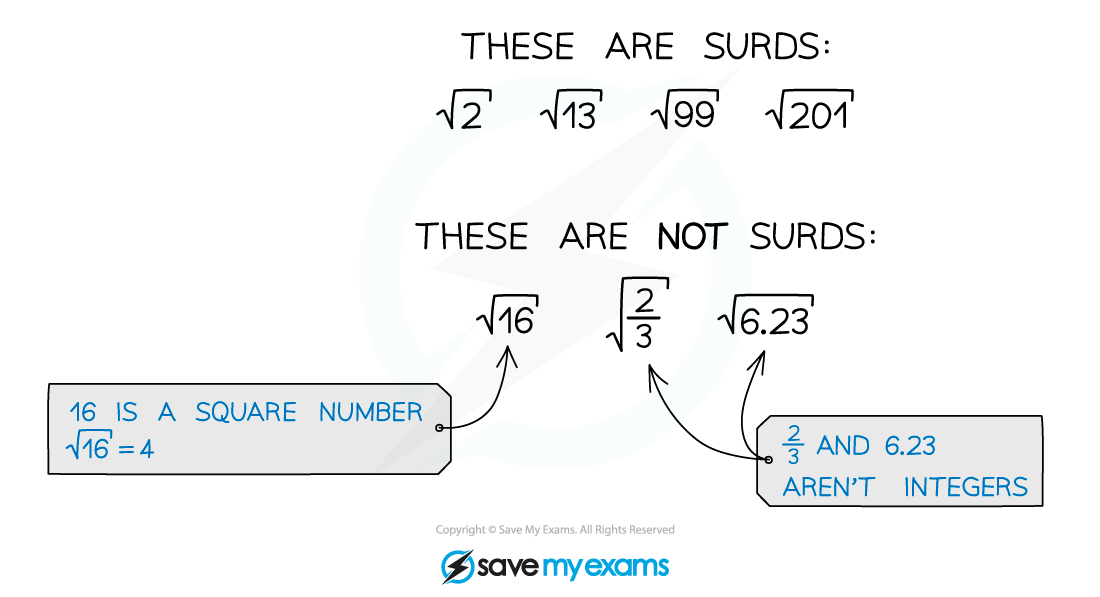Exact Values (Edexcel GCSE Maths): Revision Note
Exam code: 1MA1
Exact values
What are exact values?
An exact value is one where the answer can be expressed exactly and is not rounded, truncated or an unending decimal
It may be written as an integer, a fraction, a terminating decimal or as a multiple of a root or known constant such as
How do I give an answer in terms of π?
In a question involving circles you may be asked to give an answer in terms of
Treat
like an algebraic term
If calculating the circumference or area of a circle or part circle without a calculator
Substitute the values you know into the appropriate formula
Simplify the expression by performing the operations on the numbers only
Leave your final answer as a multiple of
Examiner Tips and Tricks
If you are using your calculator to work out a problem involving
, it will often give you your final answer in terms of
.
You just need to write down what you see on the calculator display!
Worked Example
Find the perimeter of the semicircle shown below.

Leave your answer in terms of .
The perimeter of the semicircle is made up of the arc of the semicircle and the diameter
Find the circumference of a circle with diameter 8 cm
Use the formula,
Find the arc length of the semi-circle by dividing the circumference by 2
Add the diameter (8 cm) to the arc length to find the perimeter of the semi-circle
Leave the answer as an expression in terms of
Surds
What is a surd?
A surd is the square root of a non-square integer
Using surds lets you leave answers in exact form
E.g.
rather than

Your calculator may automatically give you an answer to a calculation in surd form
Make sure that you are confident interpreting answers in surd form and entering surds into your calculator
How do I work with surds?
Adding or subtracting surds is very like adding or subtracting letters in algebra
You can only add or subtract multiples of 'like' surds
Be very careful, you can not add or subtract numbers under square roots
Remember that squaring is the inverse operation of taking the square root
If you square a surd, the result is the number without the root sign
Examiner Tips and Tricks
Questions involving Pythagoras theorem often end up with a surd in the solution
E.g. The hypotenuse of a triangle could have a length of
cm.
Leave your answer in surd form unless a specific degree of accuracy is asked for in the question.
Worked Example
Find the length of the diagonal of the area of the rectangle. Leave your answer as an exact value.

The diagonal forms a right-angled triangle with the length and the width of the rectangle
Find the length of the diagonal (the hypotenuse of the triangle)
Use Pythagoras' theorem,
Take the square root to find c
Leave your answer in surd form
cm

You've read 0 of your 5 free revision notes this week
Unlock more, it's free!
Did this page help you?